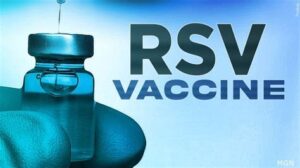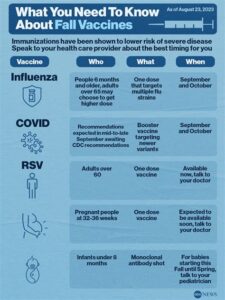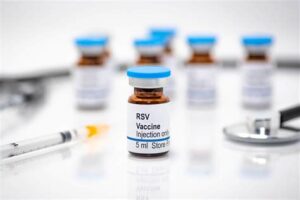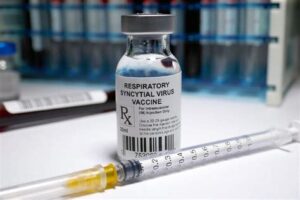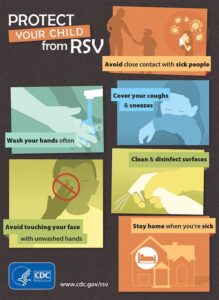Explore RSV virus, its vaccine function, immune response activation, cellular defense mechanisms, and evaluate vaccine efficacy to understand its impact on health.The development of a vaccine for respiratory syncytial virus (RSV) marks a significant advancement in public health, particularly for vulnerable populations such as infants and the elderly. This blog post will explore the intricate mechanisms behind the RSV vaccine, beginning with an overview of the virus itself. Understanding how RSV affects the respiratory system lays the groundwork for comprehending the vaccine’s function. We will delve into the activation of the immune response, highlighting how the vaccine triggers defenses within the body. Additionally, we’ll explore the cellular defense mechanisms that the vaccine stimulates, providing a comprehensive picture of its protective capabilities. Finally, we’ll evaluate the efficacy of the RSV vaccine, discussing its potential impact on reducing the incidence and severity of RSV infections. Join us on this informative journey as we uncover the science behind the RSV vaccine and its vital role in safeguarding health.
RSV Virus Overview
Respiratory Syncytial Virus (RSV) is a highly contagious virus that primarily affects the respiratory tract. It is a major cause of respiratory illnesses, particularly in young children and infants. The virus can lead to conditions such as bronchiolitis and pneumonia, which can be severe in vulnerable populations.
RSV is spread through respiratory droplets when an infected person coughs or sneezes. It can also survive on surfaces, making it possible for individuals to contract the virus by touching contaminated items and then touching their faces. The symptoms of RSV infection mimic those of a common cold and may include a runny nose, cough, and fever. However, in infants and young children, it can escalate to more serious respiratory issues.
The RSV virus tends to circulate in seasonal outbreaks. The peak season usually occurs during the winter months, which can lead to increased hospitalization rates among affected populations. Preventative measures, such as good hand hygiene and avoiding close contact with sick individuals, are essential to minimize the risk of transmission, especially among high-risk groups.
RSV Vaccine Function
The Respiratory Syncytial Virus (RSV) is a significant cause of respiratory infections, particularly in infants and young children. The development of an RSV vaccine aims to enhance public health by reducing the incidence of these infections. Understanding the vaccine’s mechanism of action is crucial to appreciating how it can protect vulnerable populations.
The RSV vaccine functions primarily by stimulating the body’s immune response. When a vaccine is administered, it introduces a harmless component of the virus, which is typically a protein that resembles the RSV surface proteins. This exposure prompts the immune system to recognize the virus as a threat, thereby activating various immune mechanisms.
In response to the vaccine, the body produces specific antibodies against the RSV antigens. These antibodies remain in the bloodstream, providing the immune system with the means to quickly neutralize the virus if exposed in the future. Additionally, the vaccine enhances the activity of T-cells, which play a crucial role in identifying and destroying infected cells, thus further bolstering the body’s defense against RSV.
Overall, the RSV vaccine plays an essential role in preparing the immune system to combat the virus effectively, reducing the likelihood of severe respiratory infections among those vaccinated.
Immune Response Activation
The immune response activation is a crucial process in protecting the body against pathogens like the respiratory syncytial virus (RSV). When a virus invades, the immune system recognizes it through specific receptors present on immune cells, initiating a complex cascade of reactions.
Upon recognizing the virus, antigen-presenting cells (APCs), such as dendritic cells, capture and process the viral particles. These cells then present the viral antigens on their surface, which stimulates T-helper (CD4+) cells. This activation is vital for the subsequent steps in the immune response.
Once activated, T-helper cells secrete various cytokines that further activate B cells and cytotoxic T cells (CD8+). B cells generate antibodies, which bind to the virus, blocking its entry into cells and marking it for destruction by other immune components. Furthermore, cytotoxic T cells directly kill infected cells, preventing the virus from replicating.
| Step | Process |
|---|---|
| 1 | Recognition of the virus by immune cells |
| 2 | Activation of APCs and presentation of viral antigens |
| 3 | Stimulation of T-helper cells and secretion of cytokines |
| 4 | Activation of B cells and production of antibodies |
| 5 | Activation of cytotoxic T cells to kill infected cells |
This multi-faceted approach ensures a robust immune response against RSV, reducing the severity of the infection. Understanding the intricacies of this process can aid in the development of effective vaccine
Cellular Defense Mechanism
The RSV vaccine plays a crucial role in the activation of the body’s cellular defense mechanisms against the respiratory syncytial virus. This vaccine is designed to prime the immune system, enabling it to recognize and combat the virus more effectively upon exposure. Here, we explore how the vaccine interacts with various cells in our body to enhance immunity.
When the RSV vaccine is administered, it introduces harmless components of the virus—such as proteins—to the immune system. These antigens trigger the activity of T cells and B cells, which are vital players in the body’s immune response. T cells identify and destroy infected cells, while B cells produce antibodies that neutralize the virus, preventing it from spreading.
One of the key advantages of the vaccine is its ability to create memory cells. After the initial immune response, some B cells and T cells become long-lasting memory cells. If the body encounters the real RSV in the future, these memory cells spring into action faster, leading to a more robust and expedient defense against the virus. Thus, the cellular defense mechanism activated by the RSV vaccine significantly enhances the body’s ability to respond to potential infections.
Vaccine Efficacy Evaluation
Evaluating the efficacy of the RSV vaccine is crucial for understanding its impact on public health. The assessment of a vaccine’s performance involves rigorous clinical trials and long-term studies that can provide us with insightful data.
One of the primary methods to determine vaccine efficacy is through randomized controlled trials (RCTs). In these trials, one group receives the RSV vaccine while a control group receives a placebo. The incidence of RSV infections is then compared between the two groups. Efficacy is typically calculated based on the percentage reduction in disease cases among vaccinated individuals compared to those who are not vaccinated.
In addition to RCTs, observational studies are also conducted to evaluate how the vaccine performs in real-world settings. These studies can help researchers understand factors such as vaccine effectiveness across different populations, including various age groups and those with underlying health conditions. Observational data can provide useful insights into the vaccine’s effectiveness in reducing severe RSV cases and hospitalizations, further informing public health strategies.
Overall, ongoing monitoring and evaluation of the RSV vaccine’s efficacy are essential to ensure its continued success and safety in the fight against the RSV virus.
Frequently Asked Questions
What is the RSV vaccine designed to prevent?
The RSV vaccine is designed to prevent respiratory syncytial virus (RSV), which is a common viral infection that can lead to severe respiratory illnesses, particularly in infants and older adults.
How does the RSV vaccine work in the body?
The RSV vaccine works by stimulating the immune system to recognize and fight the RSV virus. It typically contains inactivated or weakened forms of the virus, or specific proteins from the virus, which trains the immune system to produce antibodies.
Who is the primary target population for the RSV vaccine?
The primary target population for the RSV vaccine includes infants, young children, and older adults, who are at higher risk of severe RSV-related complications.
What are the potential side effects of the RSV vaccine?
Most side effects of the RSV vaccine are mild and can include soreness at the injection site, low-grade fever, or fatigue. Serious side effects are rare.
How effective is the RSV vaccine in preventing infection?
The efficacy of the RSV vaccine can vary, but clinical trials have shown promising results, demonstrating significant reduction in RSV-related hospitalizations among vaccinated individuals.
Are there any ongoing studies related to the RSV vaccine?
Yes, ongoing studies are being conducted to evaluate the long-term effectiveness, safety, and optimal vaccination schedules for the RSV vaccine in different populations.
What is the importance of developing an RSV vaccine?
Developing an RSV vaccine is important because it can reduce the incidence of severe RSV infections, decrease hospitalizations, and ultimately lower healthcare costs while improving the quality of life for vulnerable populations.
